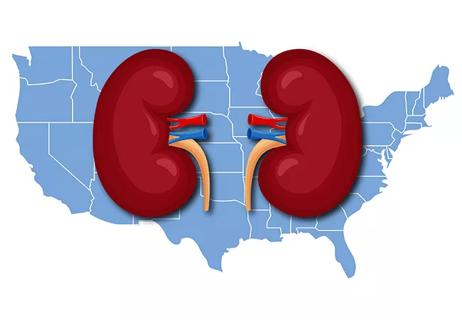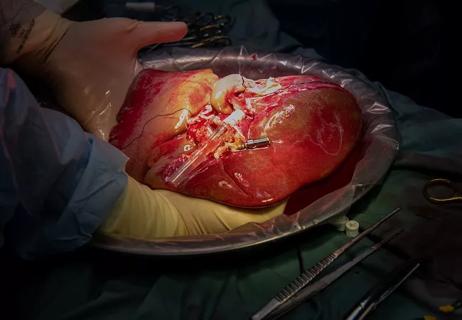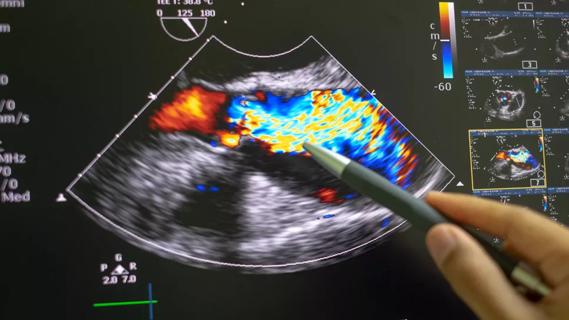Lung transplantation will be the first organ system to move to the continuous distribution (CD) allocation system in March 2023. While the current lung allocation score system (LAS) prioritizes candidates based on the estimated net survival benefit of a transplant within strict geographic boundaries, the continuous distribution system will minimize the role of the proximity of the donor to the transplant candidate giving more priority to consideration of transplant benefit. The continuous distribution approach provides relative value to important considerations in organ allocation, including waitlist urgency, post-transplant survival, candidate biology, pediatric status and placement efficiency. It aims to reduce the impact of the geographic proximity of the donor to the candidate in organ allocation, which would allow the sickest candidates broader geographic access to donors.
Cleveland Clinic is a non-profit academic medical center. Advertising on our site helps support our mission. We do not endorse non-Cleveland Clinic products or services. Policy
As the lung transplant community prepares for UNOS to implement this major change on March 2, 2023, lung transplant allocation models were reevaluated to ensure prediction models were designed to maximize potential transplant benefits at the individual patient and societal levels. The LAS system is based on two Cox proportional hazards models to calculate the waitlist area under the curve (WLAUC) and post-transplant area under the curve (PTAUC) to represent expected survival without and with transplant over the next year, respectively. The current system includes a 2:1 weighting of WLAUC to PTAUC in its calculation of transplant benefit, and it excludes long-term survival in modeling. In the recently published article and related podcast in The Journal of Heart and Lung Transplantation, the team of researchers examined how adapting the LAS modeling structure, follow-up time, and weighting would impact transplant trends in a CD allocation system compared to the current allocation system.
“As part of this shift, there have been changes to the mortality models used to prioritize individuals’ access to transplant,” says Carli Lehr, MD, PhD, transplant pulmonologist at Cleveland Clinic and the lead author of the paper. “There are two components to the model — waitlist mortality and post-transplant survival. One of the criticisms of the lung allocation system score has been that it uses short-term (one-year) survival in its models and may not consider long-term benefits. We performed this study to understand how components of allocation could change if we used a long-term (five-year) survival model for the post-transplant component.”
In the article, the authors focused on four key strategies: (1) using short-term (one year) compared to long-term (five-year) post-transplant models; (2) comparison of the current LAS allocation framework and CD with altered weights of the waitlist and post-transplant models; (3) updating model cohorts to reflect the current transplant population; and (4) assessing assumptions intrinsic to currently used Cox models, including the proportional hazard assumption and consideration of time-varying effects.
The authors looked at lung transplant recipients (mean age of 57 years) from 2014 to 2018 and compared one-year to five-year models. Six total models were included:
They found that the models predicted similarly across the different post-transplant models (similar C-statistics in the one-year models [60.2%, 60.6% and 60.5%] and five-year models [58.9%, 58.9% and 59.2%]), but they varied a bit more in the five-year models compared to the one-year models. In the simulation, candidates aged 18 to 65 experienced higher transplant rates and encompassed a greater proportion of transplant recipients. On the other hand, candidates 65 and older experienced lower transplant rates and comprised a lower proportion of transplant recipients in the five-year PTAUC model.
According to Maryam Valapour, MD, MPP, Director of Lung Transplant Outcomes at Cleveland Clinic and the senior author of the paper, “The five-year survival model showed that there were increased transplant rates for individuals, particularly those with pulmonary hypertension and cystic fibrosis. Those are typically our youngest patients who are transplanted. So the change to this five-year model could potentially expand access for younger individuals.”
Dr. Lehr notes that it is important to recognize that even though younger patients saw an increase in transplant numbers, individuals who are older are not disadvantaged in these new models. “Many of the changes that we found in these models were more subtle than we expected,” she explains. “This is actually a good thing because when we do allocation modeling and think about how our changes affect the allocation system, we should be concerned if we are seeing broader unexpected effects.”
She continues, “It’s also important not to forget that one of the central tenants to allocation is to provide equitable access to organs. We are expected to utilize our organs effectively because, unfortunately, we are in a system where the number of people who need organs is greater than the number of organs available. Sometimes we need to step back and make decisions about how we utilize these organs. Our goal is to achieve the greatest possible improvement across the system where we benefit patients as a whole while serving the sickest always.”
Dr. Lehr explains that one of the hardest things about allocation is figuring out the balance between making changes aimed at providing the most benefits to the most people and keeping changes tempered so that groups of people are not disadvantaged.
“That was something that we as a group tried to talk about and how to use this modeling in future organ allocation,” she says. “As we’re on the eve of essentially getting a whole new framework for organ allocation — the lung is the first organ that’s undergoing this major shift, and the other organs are slated to transition later — it’s important to recognize that this is going to be unchartered territory in an area of science that we haven’t really talked about before. That being said, there is an opportunity here to give patients who may have been disadvantaged in the previous allocation system a chance to be on equal footing.”

Counseling before and after transplantation can help patients navigate the balance between safety and practicality

Center is among few in Ohio to lead an HIV positive to HIV positive kidney transplant

Key findings and proposed clinical interventions for disparity areas

Research examines risk factors for mortality

A review of conservative, pressure-based and surgical treatments for OSA

Volatile organic compounds have potential in heart failure diagnostics

Insights for diagnosing, assessing and treating

Two NIH grants are looking at developing new antidotes against fentanyl overdose